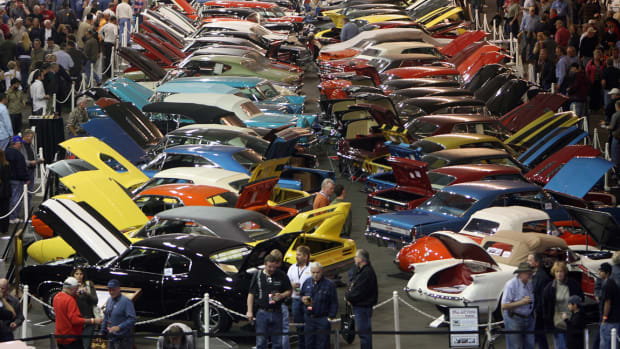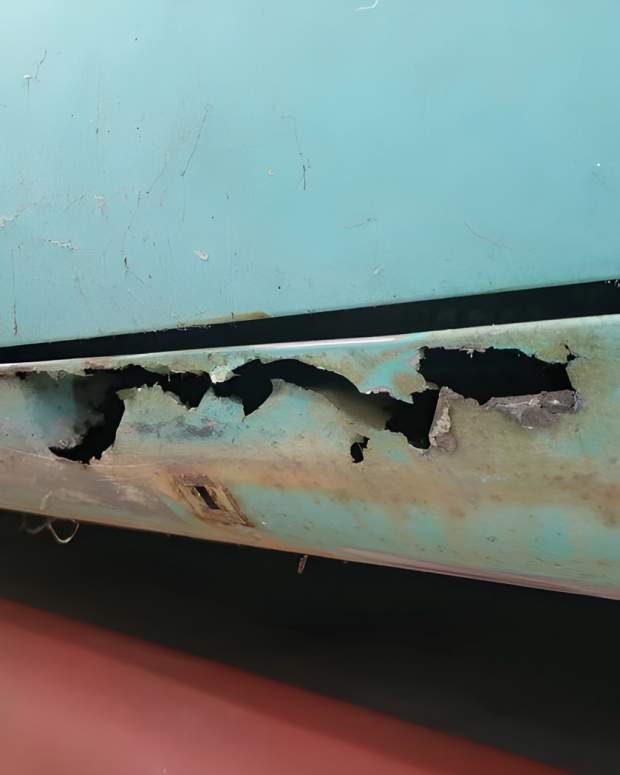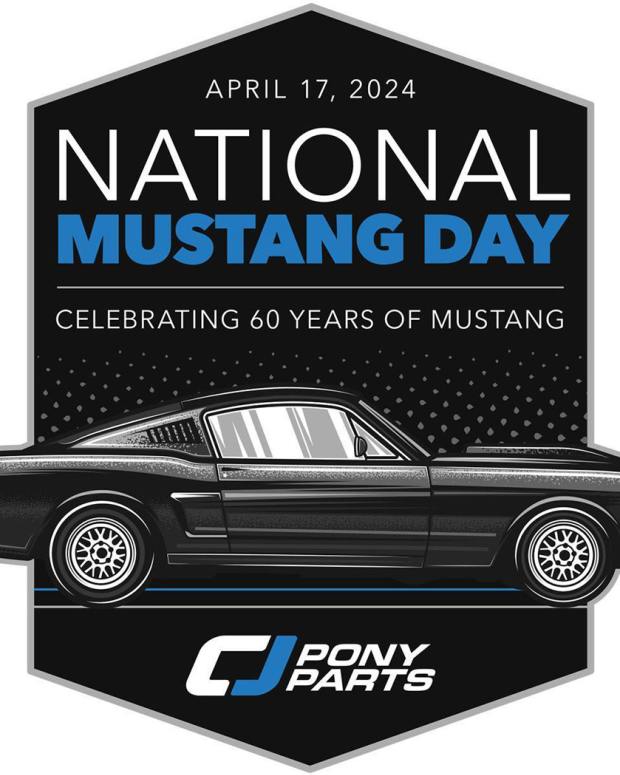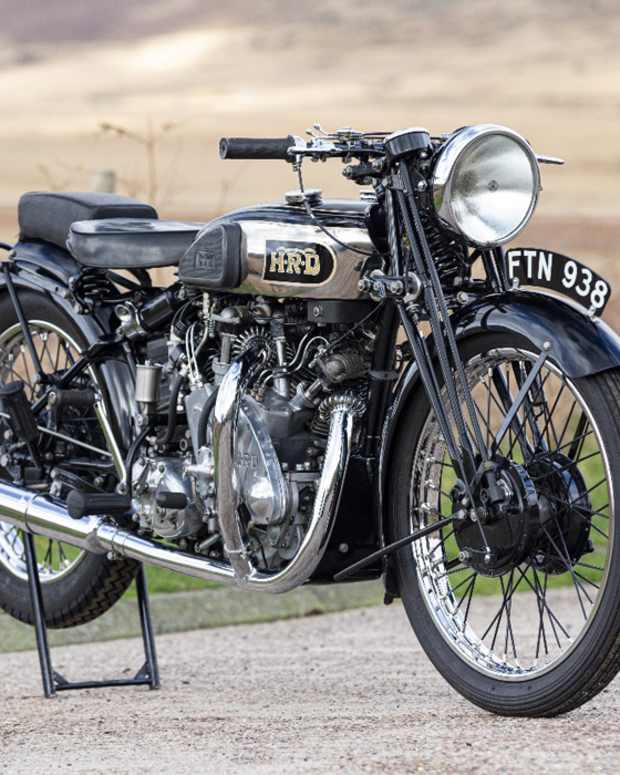GM survived 1920 despite flamboyant leadership
William C. Durant
Because of a national economic crisis and flamboyant leadership, General Motors was placed at risk in 1920. But its recovery became legendary.
When the First World War ended in November of 1918, millions of Americans who had been drafted into military service were quickly returned home. Even in months that followed, very few U.S. soldiers remained in Europe where most of the fighting had raged. Only a tiny number were to be kept in active service stateside since swelled ranks were not necessary for defense of a country that was far removed from the threat of war, especially after the War to End All Wars. Simply put, millions were mustered out and encouraged to return home to pick up life where they had left off.
But life had changed. While the abrupt cessation due to the Armistice of November 11 encouraged life in America to return to normal, there were problems. Big problems. HUGE problems. Hardly anyone could even dimly predict the predicament about to unfold, and how it would place the nation in peril.
At the crux of the problem was little, if any, governmental regulation on the return to a peacetime economy. What resulted was a severe series of social and economic cramps that made society and business double over in pain.
For example: government contracts had been signed for various carmakers to produce a wide range of items for the war just ended. But with cessation came cancellations. Imagine the shock among carmakers when they were suddenly informed that their production services were being terminated by Uncle Sam. Such an uncle! The figurative Sam proved hurtful to business, especially car production. He didn’t intend to be, but such was the result.
Too late, Uncle Sam realized that car companies had placed a tremendous financial investment behind new tooling and factory revamping for wartime production. Now all those changes were obsolete, practically useless in a peaceful economy. Companies scrambled to revert to car production, which was a several-month-long process, at best.
Not all companies had stopped car production. Smaller companies chose to convert entirely in order to show their patriotism and gain good profits for future car endeavors. Other makers only dedicated a portion of their production to defense, choosing to keep dealerships open and supplied for what many expected to be a long haul into peacetime.
Those that kept their car lines at least partially in operation but at a reduced rate were the wiser when the Armistice took hold.
William C. Durant had become too flamboyant as creator of General Motors. He had lost the conglomerate once, then came back to control it through the fledgling Chevrolet brand which had proved to be a darling of America, as buyers began proving soon after its introduction in 1911.
Corporate insider Alfred P. Sloan, Jr., later to head GM, witnessed the impact of Durant in 1918 when business was rosy. “I was of two minds about Mr. Durant,” said Sloan. He admired Durant’s genius, his imagination. Sloan saw Durant as a generous man filled with integrity. He was completely loyal to General Motors. Problem was, Durant had equated it to himself. To re-coin a phrase, what was good for Durant was good for General Motors. And Durant’s maniacal lust for huge success drove him uncontrollably toward a devastating economic precipice that threatened to swallow GM.
“He was too casual in his ways for an administrator, and he overloaded himself,” Sloan observed. His decisions were driven by impulse. An example of this weakness surfaced when Sloan suggested an independent audit of corporation books in 1919. Books had been audited previously when bankers had their sway at GM, but in recent time, with Durant’s return to the helm, audits slipped by the side. Sloan had a devil of a time convincing Durant to engage the suggestion. In Sloan’s words, “Durant did not have a sound concept of accounting…and did not realize its great significance in administration.” Durant bowed to Sloan’s suggestion, then assigned him the job of securing experts for the audit.
That impulse had made GM That same impulse had over-extended the corporation some years previous. Now that impulse returned with Durant and was placing the company at risk during a critical time.
This modus-operandi was wearing thin in the first quarter of the 20th century. When Durant set his course, he was seldom deterred on any matter. If the Finance Committee decided on a certain subject, Durant leveraged his executive committee to overturn the decision.
The first serious hurtle to the function of General Motors arrived late in 1919. By then, tens of thousands of new military veterans had successfully tried to reclaim their old jobs but were rebuffed by businesses of all sizes. There had been no mandated guarantees on a former soldier returning to his old position. Men suffered. Families became desperate. There were strikes, too, especially among railroads which were the life-blood for factory supplies. These strikes often were in response to recent inflation and the need for current workers to protect their new jobs made available thanks to the draft.
People hesitated to spend. Money was withdrawn from banks since accounts were not safely insured. News cars were not in demand. Recession was afoot. Worse than that, depression was ready to rear its ugly head.
GM’s Executive Committee unanimously resolved to increase capital requirements, “should a serious recessing in business occur, or should plants be suddenly shut down due to serious strikes extending over a period of several months,” said the resolution.
The corporation expected tremendous sales in the wake of war’s end. This didn’t happen. But GM, not realizing the danger and running on impulse, set production levels 36 percent higher for 1920. Heavy purchases were made for supplies and parts. Internal experts warned to keep inventory costs below $150 million. Few listened as the cost reached $168 million in April of 1920, then $185 million in June. Then in October the amount zoomed to $209 million. GM was in trouble, along with many other carmakers. Sales were sluggish. Hopes were dashed.
Stock values dipped. Individuals who had purchased stock via a loan were being left short. Creditors requested that full payment be made on the stock purchased or that the stock be liquidated to pay the loans. Alfred P. Sloan, Jr., owned a great deal of stock in General Motors, but he had paid for it with his own cash, not on margin lending. He was safe, even though values dropped. He anticipated a rise, but knew not when or exactly how.
Durant was feeling the pinch. In November of 1920, brokers requested $150,000 to stabilize his investments. Sloan and a few others realized that a takeover was imminent. Durant had to be eased out. The du Pont family, showing continued interest in GM, was willing to invest as much as $10 million in securities to keep GM alive. Morgan & Company arranged a loan of $20 million to cover any indebtedness incurred by Durant.
In four days, he was out.
The real culprit wasn’t Durant. He lived and breathed GM and believed everything he did was beneficial to that endeavor. The real culprit was uncontrolled expansion amid warnings of an economic downturn. Few wanted to believe this would happen, but their worst fears were realized. Durant was not the only one to blame for over-expenditure and over-expansion. Large shareholders could have applied brakes but they didn’t—until it was nearly too late. Durant was supremely disappointed, to say the least, took his hat and left.
Like Napoleon, he had returned to the throne. Would he ever try again?
Officials at GM wondered. If Durant might return a second time, would he have changed? Likely not. The du Ponts and financiers banked against it and reformed General Motors for future success. It was risky. It was challenging. And it was absolutely necessary, or GM would become a victim of circumstance. That was not to be.
At least not in the 1920s.













